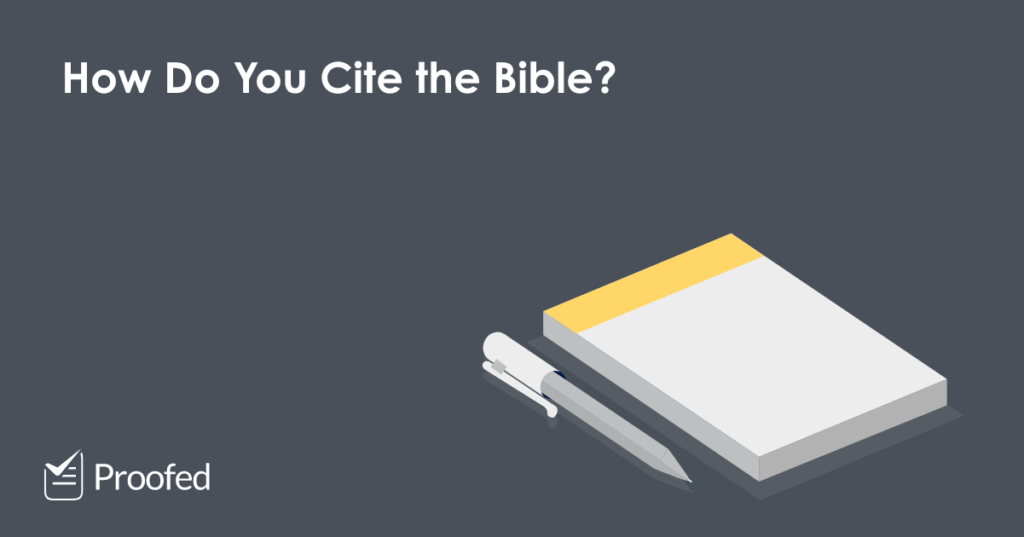There are many religious texts in the world: the Bible, the Quran, the Dhammapada, etc. We’ll leave aside the question of which are correct (no spoilers). Instead, we’re focusing on the less controversial issue of how religious texts are referenced in academic writing.
Well, we say “less controversial,” but there’s no one answer here either! It all depends on the reference system you’re using.
In this post, for instance, we look at APA, MLA, and Chicago.
APA Referencing
In APA referencing, you cite holy texts by giving the title of the version used and the date of publication (plus the date of original publication where relevant):
The Bible (King James Bible, 1769/2017) contains many unusual stories.
If you are citing a particular passage, give a citation using the standard divisions for the text (e.g. book, chapter, and verse numbers for the Bible, not page numbers):
It is not clear why the children mock Elisha for being bald, but their punishment seems excessive (King James Bible, 1769/2017, 2 Kings 2:23–24).
Here, for example, the author is citing verses 23 and 24 in chapter two of the second Book of Kings. In the reference list, meanwhile, the format to use depends on how you accessed the text (e.g., for a print version, you would list it as a book; but for an online version, you would list it as a website).
MLA Referencing
With MLA, your first in-text citation of a religious text should specify the version you’re using, as well as the chapter, book and verse (or another standard division where applicable):
Allah is noted for being “swift in account” (The Holy Qur’an, Ghafir 40.17).
Find this useful?
Subscribe to our newsletter and get writing tips from our editors straight to your inbox.
For additional citations of the same text, you can then simply give the passage being referenced in brackets (e.g., the book, chapter, and verse number). However, you may also want to shorten books of the Bible in citations using the MLA-approved abbreviations.
In the “Works Cited” list, you should then list the source using the appropriate format (e.g., print for book, website for online) with full publication details. Minimally, references should include the title of the specific version, publication details, and the year of publication. However, make sure to provide any other details relevant to the version cited (e.g., some religious texts have a named translator).
Chicago Referencing
In Chicago referencing, the format for a religious text is similar, whether you’re using footnotes or in-text citations. In both cases, it’s based on citing the Bible, so it involves citing the book, chapter, verse, and version of the text you’re using:
Footnote citation: 1. 2 Kings 2:23-24 (New International Version).
Author-date citation: The bear attack was unexpected (2 Kings 2:23-24, NIV).
As shown above, you can sometimes shorten the version of the text (e.g., New International Version = NIV). Make sure to check this with your professor, supervisor, or lecturer, though, as it could cause confusion.
As for publication information, Chicago referencing doesn’t require you to add religious texts to the bibliography/reference list. However, as above, you may want to check with your professor, as your university might want you to include all the texts you cited in the main text of your paper.
Religious Texts in Harvard Referencing
Finally, a quick note on Harvard referencing. Many universities specify “Harvard referencing,” but this is a generic word for author–date citations.
As such, different versions of Harvard referencing take different approaches when citing religious texts. And if your university uses Harvard referencing and you need to cite a religious text in your work, it will be vital to check your style guide carefully. Furthermore, when in doubt, you can always hire a proofreader to make sure your referencing is error free.
